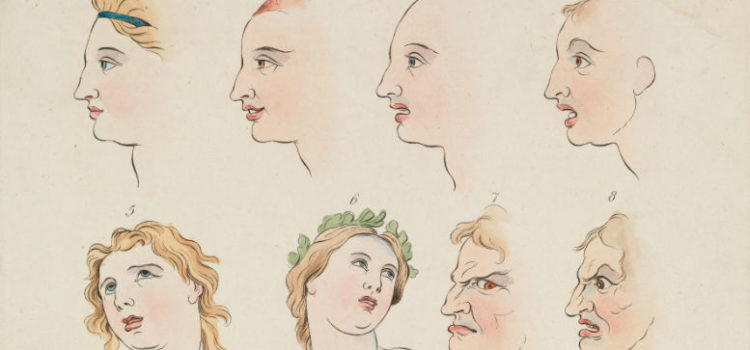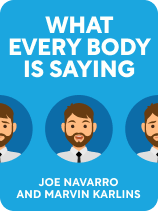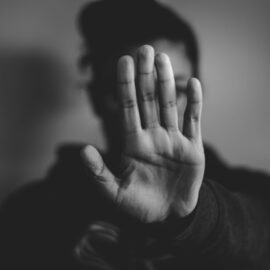

This article is an excerpt from the Shortform book guide to "What Every Body Is Saying" by Joe Navarro and Marvin Karlins. Shortform has the world's best summaries and analyses of books you should be reading.
Like this article? Sign up for a free trial here.
How reliable are facial expressions? What are some things you should look out for when reading facial expressions?
When it comes to reading someone’s feelings and intentions, facial expressions can offer helpful cues. However, they aren’t as reliable as body language. This is because we’ve trained our faces to feign emotions, so you need to be able to decipher very subtle cues.
Here’s a look at the key facial cues you should look out for when trying to read faces.
Decoding Facial Expressions
Unlike other parts of our bodies, we’ve trained our faces to mask how we truly feel. This means that when reading facial expressions, you must use careful judgment and look for subtle cues. He contends that lying is an adaptation that many of us have formed since childhood—we’ve learned to hide displeasure and feign agreement to maintain relationships and avoid conflict.
(Shortform note: In The Laws of Human Nature, Robert Greene agrees with Navarro’s claim that masking our emotions is a social adaptation and says that you should wear a pleasant mask to form good impressions. He argues that complete honesty would cause us to offend others and make us vulnerable to being judged or taken advantage of. To preserve our mental and social health, we commonly mask negative emotions like aggression or vindictiveness that would provoke negative responses from others.)
With this in mind, Navarro suggests you pay more attention to the first emotion that you notice when reading someone’s facial cues. For example, if you make a suggestion to someone and notice they furrow their brow before nodding in agreement, give more weight to the first behavior you observe (the furrowing of the brow).
(Shortform note: According to Robert Greene, this first display of emotion is likely to be a microexpression, or one that appears for under a second. These may occur when someone is trying to suppress their emotions, as expressions are hard to control. Greene suggests you use your peripheral vision to observe these microexpressions.)
Also, focus more on displays of negative emotions over positive ones. If someone says they’re excited but their facial expression indicates displeasure, consider the negative emotion as more truthful. This is because it’s often harder for someone to conceal their body’s limbic response to discomfort than it is to feign pleasure.
(Shortform note: While Navarro recommends you focus on displays of negative emotions, Robert Greene points out in The Laws of Human Nature that it can be harder to notice negative cues for two reasons. First, we naturally want to be liked and might subconsciously ignore hints of dislike. Second, people mask their dislike to be socially appropriate. When you’re trying to detect negative cues, Greene suggests you look for microexpressions and mixed signals.)
While facial expressions can be misleading, certain cues can still offer helpful insights. Navarro points out several parts of the face you should observe: the eyes, changes in face color, and the mouth.
1) Observe the Eyes
Although we have more control over facial expressions than other parts of our bodies, our eyes still have numerous automatic limbic responses that have developed over the course of human evolution: They instinctively block out things we dislike and widen to things we like.
Your blink response, for instance, happens instantaneously to protect your eyes from physical harm such as dust blowing in your face. When reading body language, you can pick up more subtle eye blocking behaviors that a person might display for less obvious threats, such as seeing a person they dislike. Take note of more subtle cues like squinting, rapid blinking, and pupil constriction, which are common indicators of discomfort. On the other hand, widened eyes and dilated pupils reveal positive interest since they’re not being triggered to block out any threats.
(Shortform note: Researchers support Navarro’s claim that the eye’s instinctual behaviors can help you read body language. However, they add that the expressiveness of your eyes serves not only as an indicator of your emotions but as a way to alter your vision depending on the situation. Navarro suggests that widened eyes might signal positive interest, but they can also indicate fear. In both cases, your eyes widen to increase your field of vision. Narrowing your eyes, on the other hand, sharpens your vision onto whatever prompts your dislike.)
2) Observe Changes in Face Color
Navarro explains that changes in face color, such as blushing or growing pale, can be truthful indicators of emotions since we have little control over the blood flow in our faces. When you experience strong feelings like embarrassment, your limbic system gets triggered, causing blood to rush to your face and creating a flushed look. When you sense something alarming, your face pales as your blood flows to other parts of your body in preparation for fight or flight.
(Shortform note: Navarro primarily discusses blushing and paling, but researchers have found that many emotions have a unique pattern of facial coloring. Disgust, for instance, results in a bluish-yellow tint around the lips and a reddish-green around the nose and forehead area, while happiness is associated with reddened cheeks and temples along with blue around the chin.)
3) Observe the Mouth
Navarro explains that the fullness of your lips indicates your level of security. When we feel secure, our lips are relaxed and full. The more uncomfortable we are, the more we purse our lips. This is a protective limbic response that activates so that you don’t ingest anything dangerous during a threatening situation.
(Shortform note: In The Like Switch, Jack Schafer and Marvin Karlins agree with Navarro that lips can be revealing and provide insights beyond broad indications of comfort and discomfort. They argue that pursed lips can more specifically indicate disagreement with what you’re saying. Furthermore, lip biting or lip compression might mean that the person is hesitant to speak their mind.)

———End of Preview———
Like what you just read? Read the rest of the world's best book summary and analysis of Joe Navarro and Marvin Karlins's "What Every Body Is Saying" at Shortform.
Here's what you'll find in our full What Every Body Is Saying summary:
- A guide from a former FBI agent on how to decipher body language
- How to master the language of nonverbal communication
- How to detect when someone is lying to you and access their true thoughts






